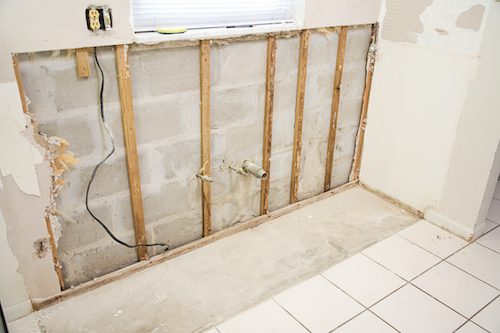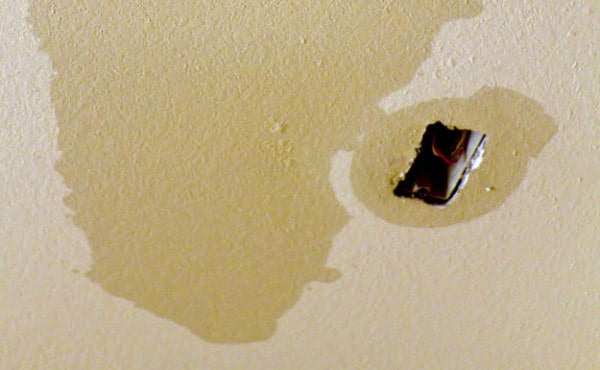Have you been trying to find details around How to Find and Repair Water Leaking in the Wall?

Water stains on wall surfaces are not pleasurable to the eyes. In some cases it seems virtually inescapable to experience water stains on wall surfaces in houses.
Homeowners staying in damp regions frequently handle the fear of water discolorations on walls. That doesn't have to be the instance for you. With well-shaped as well as accurate information on the reasons for water discolorations as well as punctual repair processes, you will certainly constantly be an action ahead of such events. This short article assures to be a helpful guide for you.
3 Typical Root Causes Of Water Spots on Walls
As opposed to popular belief, water spots on walls do not always stem from inadequate structure products. There are numerous causes of water stains on walls. These include:
Damp
When hot moist air meets with dry cold air, it triggers water droplets to form on the walls of buildings. When there is heavy steam from cooking or showers, this occurs in restrooms and kitchens. The water beads can tarnish the surrounding walls in these parts of your home and infect various other areas.
Wet or condensation influences the roofing and walls of structures. When the wall is damp, it produces a suitable setting for the growth of fungis and germs.
Poor Drain
This will protect against water from leaking right into the walls. This web links to excessive dampness that you notice on the wall surfaces of your structure.
The leading cause of wet wall surfaces, in this case, can be an inadequate drainage system. It can likewise result from inadequate management of sewer pipes that go through the building.
Pipeline Leaks
Most residences have a network of water pipes within the wall surfaces. This ensures that the pipelines are well away from the reach of harmful rodents. It always raises the practicality of such pipelines, as there is little oxygen within the walls. This prevents rust.
A downside to this is that water leak influences the walls of the structure and also causes extensive damages. A telltale sign of damaged pipes is the look of a water tarnish on the wall.
Pro Suggestion
A houseplant in your house additionally increases its humidity. So, if your house is already damp, you might intend to introduce houseplants with very little transpiration. An example of appropriate houseplants is succulents.
Water Spots on Wall Surface: Repair Service Tips
Homeowners would typically desire a quick fix when dealing with water spots. Yet, they would certainly quickly realize this is counterproductive as the water spots reoccur. So, right here are a couple of helpful suggestions that will certainly lead you in the repair of water stains on walls:
Verdict
No one desires to have water discolorations on walls in their home, it can happen to the ideal of us. This write-up provides you take advantage of, as you now know just how to manage this accident if it does occur.
It is always best to hire expert services to help deal with the damages in your home.
Sometimes it appears nearly unavoidable to experience water stains on wall surfaces in houses.
Contrary to preferred idea, water stains on wall surfaces do not constantly stem from bad building products. There are several reasons of water spots on walls. The water beads can tarnish the bordering walls in these parts of your residence as well as spread to other areas.
Below are a couple of useful suggestions that will lead you in the repair service of water stains on walls:
CHECKING FOR WATER DAMAGE
Water damage can be costly, and it may begin before you even notice the first signs of trouble. Water damage can cause mold and mildew in your walls and floors, which can create an abundance of health concerns for your family. It can also lead to costly repairs of various appliances and general home fixtures. To avoid the pricey consequences of water damage, here are Warner Service’s top 5 places you should check:
The walls – The easiest place to spot the beginnings of water damage is on the walls and ceilings of your home. If water damage is present, there will most likely be water stains, especially around the windows and doorframes, and/or cracks in the drywall. If a stain looks unusual (discolored to brown, black or gray, raised texture), has a swollen appearance or is soft to the touch, contact a professional immediately. The pipes – To avoid water damage, consistently check the pipes in your kitchen (especially the dishwasher and ice maker), bathrooms, laundry room (specifically washing machines) and basement for corrosion, leaks and water stains. Pay special attention to where the pipes connect in your home and the location of caulking around the bathroom fixtures, including toilets, sinks, showers and tubs. Missing or loose caulking and grout could be signs of leaking water. This seepage can also quickly cause mold and rust, so double check your water heater and tank for wet spots on the floor. The floor – Water damage is very easy to spot on the floor. Look for any warping or buckling of the material, especially in the basement. If your home has wood flooring, look for bright white or dark stains. If your home has carpeting, keep it dry and clean. A damp carpet that smells of mold could cause water damage and health problems. To avoid this, consider installing floor pans under your appliances to help prevent damages from small, slow and undetected leaks. The basement and attic – If your basement or attic smells odd check for mold and mildew around the area, especially the valley where the roof meets. While you are inspecting those areas, check for wall cracks, floor stains, rust and dampness in the insulation. If you live in a colder and/or rainier climate, perform routine checks for water damage from melting snow or ice and rain. The exterior – Check the roof for damaged flashing and missing, cracked or curled shingles. There should also be no standing water anywhere outside your home. This could be caused by puddles, leaky rain gutters or hoses, poor drainage, or short gutter spouts. Invest in a sump pump system or water flow monitoring system, and perform routine maintenance on these outdoor appliances to avoid indoor water damage.

Hopefully you enjoyed reading our post about How to Remove Water Stains from Walls and Ceilings. Many thanks for spending some time to read through our blog. Do you know about someone else who is enthusiastic about the topic? Why not promote it. We thank you for reading our article about How to Remove Water Stains from Walls and Ceilings.
Get Offer